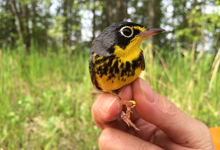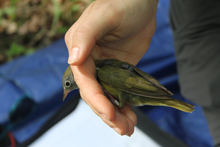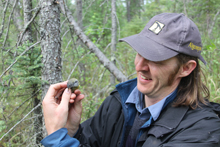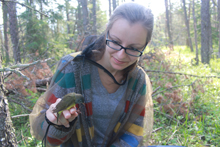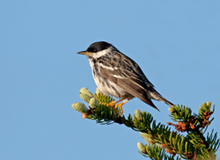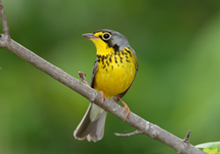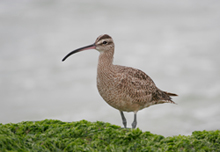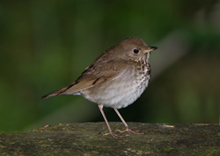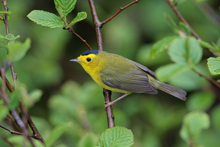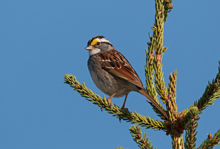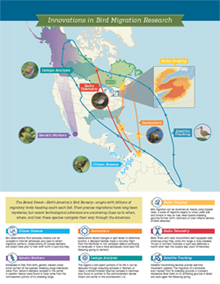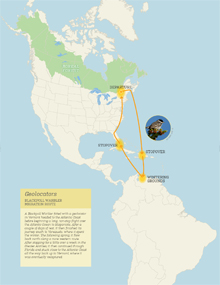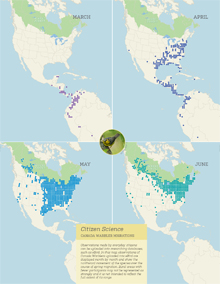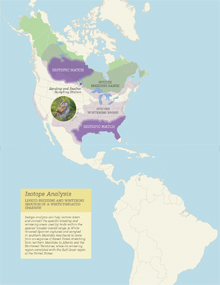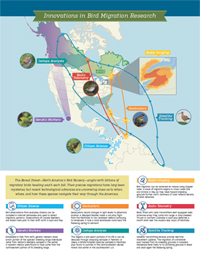Announcements
Photos, Maps, & Video - Migration Report Release
Return to main report landing page >
Photos for media use
All photos below have been approved for media use provided they are used on a one-time basis for the purposes of covering this report and are a minimum of 3k pixels wide. Please ensure photographer credit information is visible.
Canada Warbler with Geolocator and Leg Bands Credit: Kevin Fraser Example caption: A researcher in Manitoba holds a Canada Warbler that has been fitted with a geolocator and leg bands. | Connecticut Warbler with Geolocator Credit: Emily McKinnon Example caption: A researcher in Manitoba holds a Connecticut Warbler that has been fitted with a geolocator. |
Researcher Holding Connecticut Warbler Fitted with Geolocator Credit: Emily McKinnon Example caption: A researcher in Manitoba holds a Connecticut Warbler that has been fitted with a geolocator. | Researcher Holding Connecticut Warbler Fitted with Geolocator Credit: Emily McKinnon Example caption: A researcher in Manitoba holds a Connecticut Warbler that has been fitted with a geolocator. |
Bird photos - species featured in technology sections:
High-res TIF files (for print) are available upon request.
Blackpoll Warbler Credit: Jeff Nadler Example caption: A Blackpoll Warbler fitted with a geolocator was tracked flying non-stop over the Atlantic Ocean from eastern Canada all the way to the Caribbean, where it rested before resuming its journey to its wintering grounds in Venezuela. | Canada Warbler Credit: Jeff Nadler Example caption: Sighting uploads into online databases from everyday citizens has helped map the migratory range of the Canada Warbler, which breeds throughout the Boreal Forest and northeastern U.S. and winters in Central and South America. |
Whimbrel Credit: Jeff Nadler Example caption: A Whimbrel named Pingo was tracked using a satellite transmitter from its breeding grounds near the Arctic Ocean in northwestern Canada through two pit stops in Ontario Nova Scotia before barely skirting around Hurricane Isaac over the Atlantic Ocean en route to Brazil. | Gray-cheeked Thrush Credit: Jeff Nadler Example caption: A Gray-cheeked Thrush that was fitted with a radio transmitter in northern Colombia was detected by an antenna nearly one month later on the Hudson Bay coast of Manitoba. |
Wilson's Warbler Credit: Jeff Nadler Example caption: Genetic markers, which are embedded in DNA, can inform researches as to where the individuals were born when sampled in winter locations. Individuals wintering near the Pacific Ocean in Mexico were found to have come from Alaska and western Canada. | White-throated Sparrow Credit: Jeff Nadler Example caption: Isotopes, which are variations of common periodic elements, can show which regions individuals spend significant time in. A White-throated Sparrow sampled in Manitoba was found to breed in the western boreal region of Canada and spend winters in the U.S. Gulf Coast. |
All maps have been approved for media or online use. All maps are © Boreal Songbird Initiative
Comprehensive migration research technology overview map/infographic:
Open/download JPG >
Open/download PDF >
Individual technology maps:
Genetic Markers | Satellite Tracking |
Geolocators | Citizen Science |
Isotope Analysis | Radio Telemetry |
Radar Imaging |
Video b-roll for media use
All video files are in high-resolution MP4 format at 1080i. Uncompressed AVI files are available upon request.
Dropbox folder containing b-roll clips >
Previews of each clip on YouTube can be found below.


